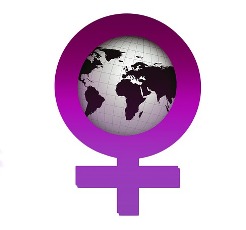Marking International Women's Day; resources on gender and violence
Thu 03 Mar 2016
The 2016 theme for International Women’s Day on 8 March is 'Planet 50-50 by 2030: Step it up for Gender Equality.' The theme encourages reaching ...

The 2016 theme for International Women’s Day on 8 March is 'Planet 50-50 by 2030: Step it up for Gender Equality.' The theme encourages reaching gender equality faster.
A number of International Women's Day events are listed on the UN Women National Committee Aotearoa New Zealand website. You can also get involved in the conversation online through many social media chanels.
Gender and family violence
The role of gender in family violence, and more specifically intimate partner violence, is often debated. Some research and resources are below.
Academic articles on this topic include:
Cross-national and multi-level correlates of intimate partner violence: an analysis of data from population based surveys, by Lori Heise and Andreas Kotsadam (2015). This study demonstrated empirically for the first time that macro-level gender-related factors predict the prevalence of partner violence. The study compiled data from 66 surveys across 44 countries. The authors examined the population prevalence of partner violence and the associations between macro-level measures of socio-economic development, women's status, gender inequality and gender-related norms. They found that gender-related factors at the national and subnational level help to predict the population prevalence of physical and sexual partner violence within the past 12 months. Especially predictive factors included:
- norms related to male authority over female behaviour
- norms justifying wife beating
- the extent to which law and practice disadvantage women compared with men in access to land, property, and other productive resources.
Based on these findings, the authors suggest "policy makers could reduce violence by eliminating gender bias in ownership rights and addressing norms that justify wife beating and male control of female behaviour. Prevention planners should place greater emphasis on policy reforms at the macro-level and take cross-level effects into account when designing interventions."
The study conducted as part of the What Works to Prevent VAWG research consortium, jointly coordinated by the South African Medical Research Council (SAMRC), the London School of Hygiene and Tropical Medicine (LSHTM), and Social Development Direct (SDDirect).
Other articles and reports on data and gender include:
The Gender Debate in Domestic Violence: The Role of Data (Australian Domestic and Family Violence Clearinghouse, 2013)
Who Does What to Whom? Gender and Domestic Violence Perpetrators (Hester, 2009)
Male Versus Female Intimate Partner Violence: Putting Controversial Findings Into Context (Holtzworth-Munroe, 2005)
Men as Victims of Domestic Violence (Australian Domestic and Family Violence Clearinghouse, 2005)
"Gender Symmetry" in Domestic Violence: A Substantive and Methodological Research Review (Kimmel, 2002)
A number of organisations provide brief information and statistics on this topic:
- Ministry for Women – What is violence against women?
- New Zealand Family Violence Clearinghouse - Data summary: Violence against women (2015)
- New Zealand Family Violence Clearinghouse - Family violence and gender fact sheet (2007)
- Shine - Gender and domestic abuse
- Women’s Refuge - Common myths: Challenging the judgements of others
- Te Kupenga Whakaoti Mahi Patunga - National Network of Stopping Violence Services - Factsheet on Gender and Family Violence (2009)
Manufacturing egalitarian injustice: A discursive analysis of the rhetorical strategies used in fathers’ rights websites in Aotearoa/New Zealand (Busch, Morgan and Coombes 2014) is a journal article on these groups.
On International Women's Day, the Green Party called for the Prime Minister to return the Minister for Women (women's portfolio) to Cabinet.
In relation to International Women's Day, the UN Women National Committee Aotearoa NZ has announced it will support the Ending Violence against Women programme in the Pacific in 2016. The Pacific has some of the world's highest rates of gender-based violence. The National Committee will provide grant funding to UN Women's Pacific Regional Ending Violence against Women Facility Fund (Pacific Fund), which was established in 2009.
Other recent work on violence against women in the Pacific and Pacific communities include:
The UN Convention on the Elimination of All Forms of Discrimination Against Women has recently reviewed Vanuatu’s progress in implementing the Convention on the Elimination of All Forms of Discrimination Against Women.
Médecins Sans Frontières/Doctors Without Borders has recently released a report, Return to Abuser: Gaps In Services And A Failure To Protect Survivors Of Family And Sexual Violence In Papua New Guinea (2016).
In Aotearoa New Zealand, a recent report looks at some New Zealand-based Samoan people's understandings of primary prevention of violence against women: A malu i 'āiga, e malu fo'i i fafo: Protection for the family, protection for all (Ministry for Women, 2015).
Image: Pixabay


